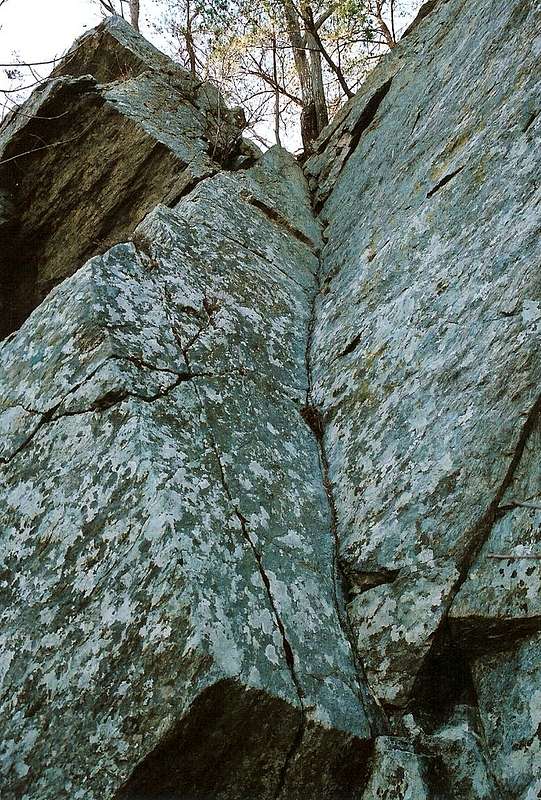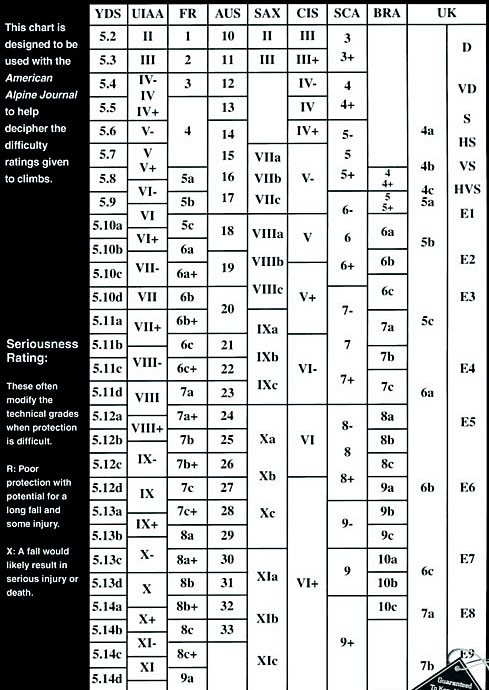Scrambling versus climbing
This is a question which has been plaguing me for a while but especially since a climbing (scrambling!?) trip last weekend.
According to wikipedia, a loose distinction of the difference is that a climb is
It also offers up this wisdom:
I've been going up mountains in the UK for about 6 months now. Initially, my understanding of the difference was that scrambling didn't demand any technical climbing ability or equipment, but that good fitness, flexibility and head for heights may be required, and occasionally rope on harder scrambles (note- already some ambiguity). I've done Crib Goch on Snowdon, The North Ride on Tryfan and Striding Edge on Helvellyn, all of which are regarded as Grade I scrambles. Tryfan has a vast number of possible lines of ascent so it's probably not worth mentioning in this discussion. We undertook Crib Goch in strong winds and mist which made the rock damp and slippery, and I was scared on a number of occasions. Having previously ascended much higher (non technical) peaks in the Alps I was probably guilty of judging a mountain purely on it's height.
A few months after, I did Striding Edge, well prepared this time with a spare pair of pants. This time the rock was dry but the winds were much stronger and gusting at gale force, enough to knock an unprepared walker off balance. Incredibly however I was actually glad of the wind because it made it more dramatic and a bit of a challenge. I only had to use my hands in a couple of places; the ridge top is wide and flat and in fair weather there's no reason anyone shouldn't be able to walk across the top. Even the exit ramp to the summit was very straightforward, and I never had to give any thought to handholds because everything visible was suitable. By comparison Crib Goch rises to a point, dropping away steeply on both sides, and the rock is uneven and frequently crumbles away when you apply any force.
Now I know the whole thing is highly subjective; one man's death defying climb is another's easy scramble, and some people just aren't bothered by the kind of exposure that would paralyse many with fear. I know through my experience of exposed places and indoor climbing that my own perceptions have changed greatly in just 6 months. But my point is that despite the vast difference in difficulty and seriousness between these two routes, they are both classed as grade I ridge scrambles. An inexperienced walker sucked in by the ease of Striding Edge could easily become a statistic on Crib Goch.
This point was drummed in to me last weekend on the Clogwyn y Person Arete on Snowdon, a grade 3 scramble. We took no chances and brought a rope, slings, nuts and hexes and we were justified. This route has it all: difficult route finding, rotten rock, some very exposed climbing with tiny holds and moves that definitely required climbing experience. It was definitely way beyond anything you'd expect on a scrambling route, and I'm not the only one who would agree. So why is such a route even classed as a scramble in the first place.
I've come to the conclusion that scrambling means that an experienced climber won't wet him/herself, but that's not very helpful for everyone else. My real concern in writing this is that the inconsistency of route gradings could lead people into serious trouble, especially in this day and age where people choose a route on the internet based on someone elses opinion without having seen it in advance. What do other people think? Is there a definite boundary between climbing and scrambling?
According to wikipedia, a loose distinction of the difference is that a climb is
any ascent where hands are used to hold body weight, rather than just for balance.
It also offers up this wisdom:
Alpine Scrambles are off-trail trips, often on snow or rock, with a 'non-technical' summit as a destination. A non-technical summit is one that is reached without the need for certain types of climbing equipment (body harness, rope, protection hardware, etc), and not involving travel on extremely steep slopes or on glaciers. However, this can mean negotiating lower angle rock, traveling through talus and scree, crossing streams, fighting one's way through dense brush, and walking on snow-covered slopes.
I've been going up mountains in the UK for about 6 months now. Initially, my understanding of the difference was that scrambling didn't demand any technical climbing ability or equipment, but that good fitness, flexibility and head for heights may be required, and occasionally rope on harder scrambles (note- already some ambiguity). I've done Crib Goch on Snowdon, The North Ride on Tryfan and Striding Edge on Helvellyn, all of which are regarded as Grade I scrambles. Tryfan has a vast number of possible lines of ascent so it's probably not worth mentioning in this discussion. We undertook Crib Goch in strong winds and mist which made the rock damp and slippery, and I was scared on a number of occasions. Having previously ascended much higher (non technical) peaks in the Alps I was probably guilty of judging a mountain purely on it's height.
A few months after, I did Striding Edge, well prepared this time with a spare pair of pants. This time the rock was dry but the winds were much stronger and gusting at gale force, enough to knock an unprepared walker off balance. Incredibly however I was actually glad of the wind because it made it more dramatic and a bit of a challenge. I only had to use my hands in a couple of places; the ridge top is wide and flat and in fair weather there's no reason anyone shouldn't be able to walk across the top. Even the exit ramp to the summit was very straightforward, and I never had to give any thought to handholds because everything visible was suitable. By comparison Crib Goch rises to a point, dropping away steeply on both sides, and the rock is uneven and frequently crumbles away when you apply any force.
Now I know the whole thing is highly subjective; one man's death defying climb is another's easy scramble, and some people just aren't bothered by the kind of exposure that would paralyse many with fear. I know through my experience of exposed places and indoor climbing that my own perceptions have changed greatly in just 6 months. But my point is that despite the vast difference in difficulty and seriousness between these two routes, they are both classed as grade I ridge scrambles. An inexperienced walker sucked in by the ease of Striding Edge could easily become a statistic on Crib Goch.
This point was drummed in to me last weekend on the Clogwyn y Person Arete on Snowdon, a grade 3 scramble. We took no chances and brought a rope, slings, nuts and hexes and we were justified. This route has it all: difficult route finding, rotten rock, some very exposed climbing with tiny holds and moves that definitely required climbing experience. It was definitely way beyond anything you'd expect on a scrambling route, and I'm not the only one who would agree. So why is such a route even classed as a scramble in the first place.
I've come to the conclusion that scrambling means that an experienced climber won't wet him/herself, but that's not very helpful for everyone else. My real concern in writing this is that the inconsistency of route gradings could lead people into serious trouble, especially in this day and age where people choose a route on the internet based on someone elses opinion without having seen it in advance. What do other people think? Is there a definite boundary between climbing and scrambling?

